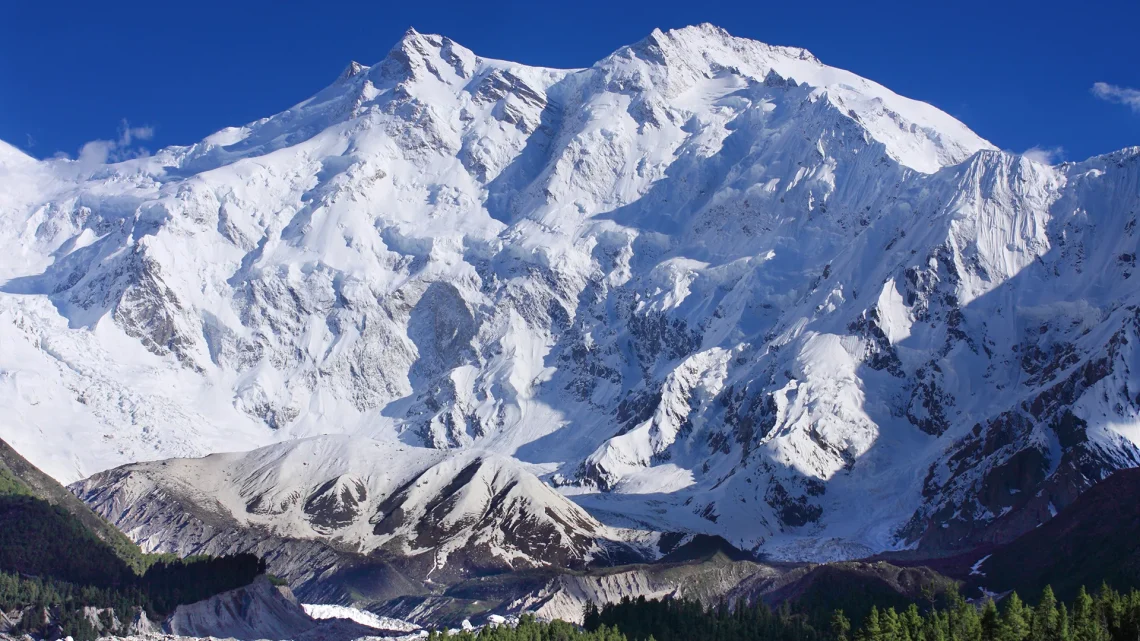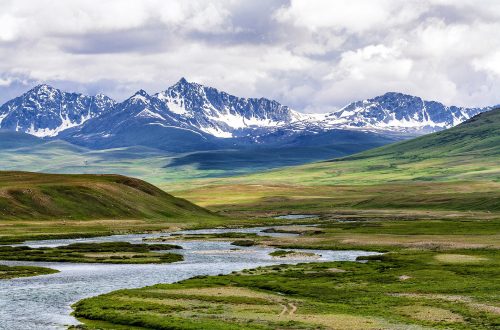Steeped in history and adorned with sheer cliffs, Nanga Parbat stands as a titan among the world’s peaks. Known as both the ‘Killer Mountain’ and the ‘Mountain of Destiny,’ it has been a beacon for mountaineers seeking the ultimate challenge. Situated in the dramatic landscapes of the Himalayas in Pakistan, Nanga Parbat is not just the ninth highest mountain in the world but also one of the most formidable. This guide unveils the mountain’s profound history, ascents, diverse flora and fauna, and the essential tips for those daring to face its heights. Embark on a journey to understand why Nanga Parbat captures the hearts of adventurers and nature enthusiasts alike.
The Historical Significance of Nanga Parbat
Nanga Parbat, meaning “Naked Mountain” in Sanskrit, transcends its awe-inspiring peak to hold immense historical significance. First attempted in 1895, it became a notorious task for mountaineers, earning the nickname “Killer Mountain” due to the high number of fatalities on its slopes. These expeditions, particularly the tragic German attempts in the 1930s, cemented Nanga Parbat’s reputation as a formidable test of human endurance. Finally conquered in 1953 by Austrian climber Hermann Buhl, the mountain continues to inspire adventurers today. Beyond its mountaineering legacy, Nanga Parbat holds cultural significance for local communities, revered as a sacred site and a symbol of resilience.
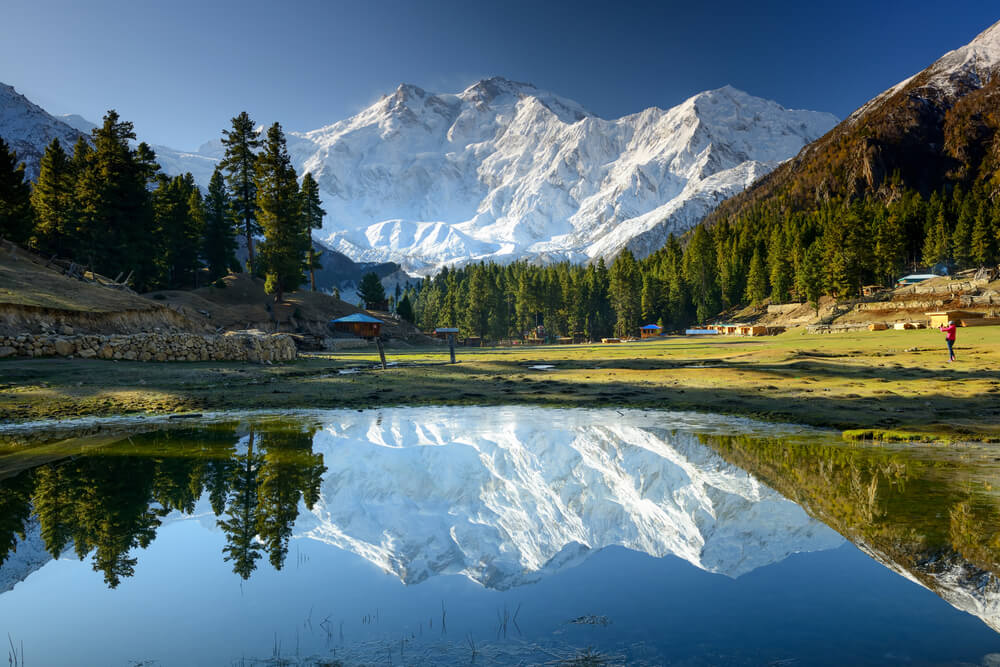
First Ascents and Notable Expeditions
Nanga Parbat’s slopes bear witness to a long history of audacious attempts and groundbreaking achievements. The first documented expedition in 1895, led by Englishman Albert F. Mummery, tragically ended in an avalanche. Decades of failed attempts followed, with several German expeditions in the 1930s resulting in numerous fatalities. Finally, in 1953, Austrian climber Hermann Buhl achieved the first successful summit, a solo climb without bottled oxygen, a feat considered a landmark in mountaineering history. Since then, Nanga Parbat has seen numerous notable expeditions, including the first winter ascent in 2016, showcasing the ever-evolving skill and determination of climbers attempting this legendary peak.
Mythical Tales and Local Lore
Nanga Parbat’s imposing presence has inspired a rich tapestry of myths and local lore. For centuries, the people of the surrounding valleys have revered the mountain as a dwelling place of djinns (powerful spirits) and fairies (paris). Legends speak of these mythical beings guarding the mountain and fiercely protecting it from those who dare to conquer its peak. Some tales warn of avalanches triggered by angered spirits, while others whisper of climbers mysteriously disappearing into the mountain’s icy embrace. These myths, passed down through generations, add an extra layer of intrigue to Nanga Parbat’s already formidable reputation, blurring the lines between reality and the fantastical.
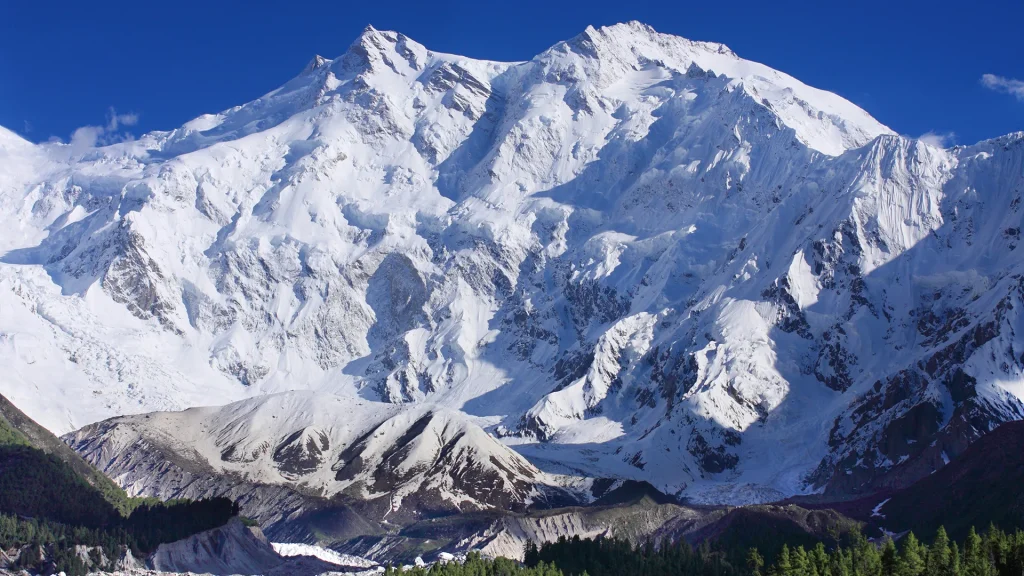
History of Nanga Parbat Expeditions
Nanga Parbat’s climbing history is a captivating blend of audacious attempts and heartbreaking losses. The first documented expedition in 1895, led by Englishman Albert F. Mummery, ended tragically in an avalanche, setting the stage for a long and perilous pursuit.
The early 20th century saw numerous failed attempts, with several German expeditions in the 1930s resulting in a string of fatalities that earned Nanga Parbat the grim nickname “Killer Mountain.” Finally, in 1953, Austrian climber Hermann Buhl achieved the first successful summit, a remarkable solo climb without bottled oxygen that marked a turning point.
Since then, Nanga Parbat has witnessed a spectrum of notable expeditions, pushing the boundaries of human endurance. The first winter ascent in 2016 stands as a testament to the evolving skill and determination of those who dare this legendary peak. Despite these triumphs, Nanga Parbat’s slopes hold the stories of countless climbers who lost their lives in pursuit of the summit, forever etching their sacrifices into the mountain’s history.
The Geological Wonders of Nanga Parbat
Nanga Parbat’s majestic peak isn’t just a visual wonder; it’s a geological marvel sculpted by powerful forces over millennia. Formed through the collision of the Indian and Eurasian tectonic plates, its colossal structure boasts a unique geological composition. The base of the mountain reveals layers of sedimentary rocks like limestone and shale, remnants of ancient seabeds uplifted by the collision.
As you ascend, the landscape transitions to rugged metamorphic rocks like gneiss and schist, contorted and hardened by immense pressure and heat during the mountain’s formation. The imposing peak itself is primarily composed of granite, an igneous rock formed by the crystallization of molten magma deep within the Earth.
Nanga Parbat’s glaciers, carved by relentless erosion, further sculpt the landscape, revealing breathtaking glacial valleys and moraines, testaments to the ongoing geological processes shaping this awe-inspiring mountain .

Flora and Fauna of the Nanga Parbat Region
Nanga Parbat’s slopes nurture a surprising diversity of flora and fauna, defying its harsh and seemingly barren exterior. At lower altitudes, fertile valleys bloom with wildflowers like irises and edelweiss, adding vibrant splashes of color to the landscape. Coniferous forests of juniper and pine dominate the mid-slopes, providing vital habitat for a variety of birdlife.
Keen observers might spot elusive lammergeyers, majestic birds of prey with impressive wingspans, soaring high above. As the altitude increases, the vegetation transitions into alpine meadows teeming with wildflowers adapted to the harsh climate. Here, nimble ibex, mountain goats with impressive horns, navigate the rocky terrain with ease.
Higher still, the permanent snow line marks the domain of leopards, these elusive predators perfectly camouflaged in their snowy habitat. Overall, Nanga Parbat’s diverse ecosystem, despite the challenges of height, showcases the remarkable resilience and the delicate balance of nature. For visiting other beautiful places CLICK HERE.
Navigating the Routes of Nanga Parbat
Nanga Parbat’s formidable peak presents a complex labyrinth of climbing routes, each posing unique task. The most popular route, the Kinshofer Route, ascends the Rupal Face, a south-facing wall known for its treacherous icefalls and unpredictable weather conditions.
The Diamir Face, on the northwest side, offers a technically demanding climb with steep rock faces and exposed ridges, while the Mazeno Ridge, on the southwest side, presents a long and arduous trek with significant avalanche risk. These routes, along with others like the Schell Route and the Messner Route, all require exceptional mountaineering skills, meticulous planning, and a healthy dose of courage.
Nanga Parbat’s unpredictable weather patterns, with sudden snowstorms and high winds, further faced by climbers, making it a true test of human resilience and respect for the mountain’s power.
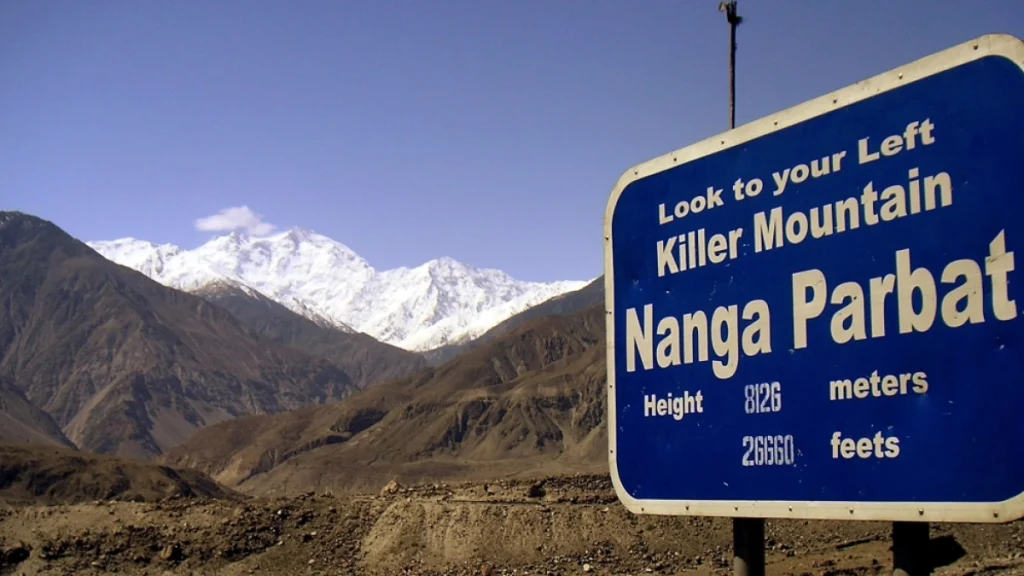
Nanga Parbat height
Nanga Parbat, meaning “Naked Mountain” in Sanskrit, soars to a staggering height of 8,126 meters (26,660 feet) above sea level. This immense elevation places it firmly within the elite group of fourteen 8,000-meter peaks globally. Nanga Parbat’s colossal stature isn’t just a number; it defines its character.
The dramatic rise from its base in the Indus Valley to its snow-capped peak creates a sense of awe and grandeur. This immense height also contributes to the mountain’s task weather patterns and unforgiving terrain, making Nanga Parbat a formidable test for even the most experienced climbers.
The Rupal Face Challenge
Nanga Parbat’s Rupal Face isn’t just a climbing route; it’s a legendary often referred to as “The Killer Wall” by mountaineers. This south-facing wall, towering an intimidating 4,500 meters (14,764 feet), is the world’s highest sheer granite face, a breathtaking yet formidable sight. The Rupal Face presents a unique set of tasks that have claimed the lives of numerous climbers.
Its steep and exposed rock faces require exceptional technical climbing skills, with long sections of loose rock and potential for rockfall adding to the danger. The ever-present threat of avalanches due to the accumulation of snow on the face further intensifies the climb. In addition to the technical difficulties, the Rupal Face is notorious for its unpredictable weather patterns.
Sudden snowstorms and high winds can rapidly transform the climb into a desperate fight for survival. Conquering the Rupal Face is considered a pinnacle achievement in mountaineering, demanding not just physical prowess but also mental fortitude and a deep respect for the mountain’s power.
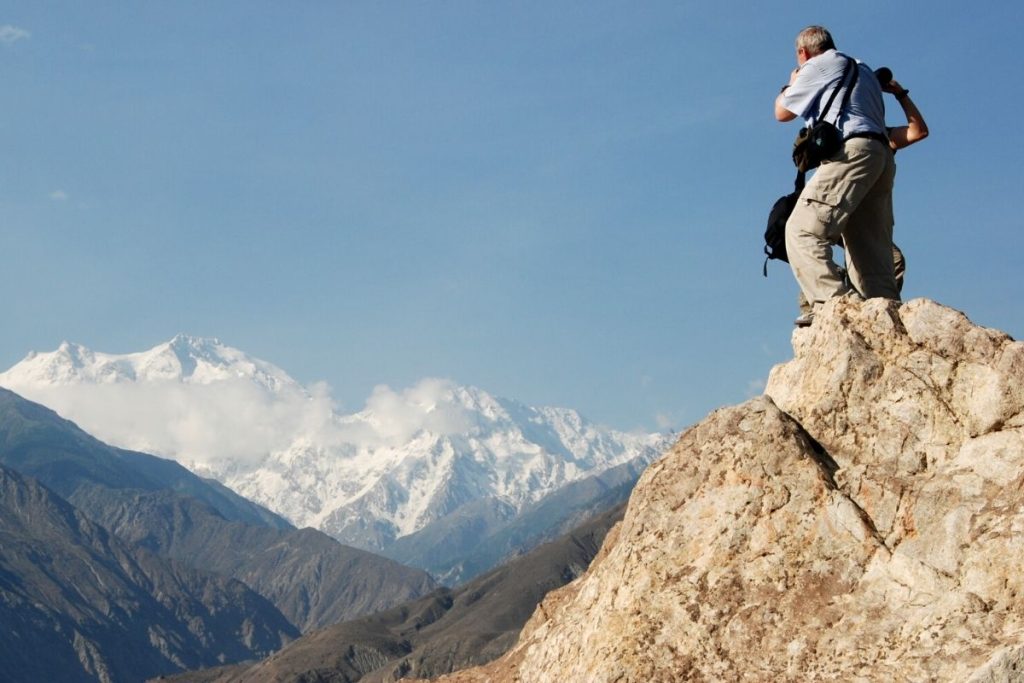
The Diamir Face: A Different Approach
While the Rupal Face reigns supreme in terms of sheer drama, Nanga Parbat’s Diamir Face on the northwest side presents a distinct task for climbers. This technically demanding route offers a different set of obstacles compared to its south-facing counterpart. The Diamir Face boasts a complex network of ridges and couloirs (steep gullies) that require meticulous route-finding and navigation skills.
The rock quality here is often suspect, with loose and crumbly sections demanding careful movement and constant awareness of falling debris. Unlike the Rupal Face, avalanches pose less of a threat on the Diamir Face. However, the constant threat of serac falls (collapsing ice formations) adds another layer of danger.
The ascent via the Diamir Face is known for its long stretches of high-altitude climbing, with climbers battling thin air and the ever-present risk of altitude sickness. Success on the Diamir Face requires strategic planning, exceptional technical climbing skills, and a strong mental focus to overcome the physical and psychological tasks of high-altitude mountaineering.
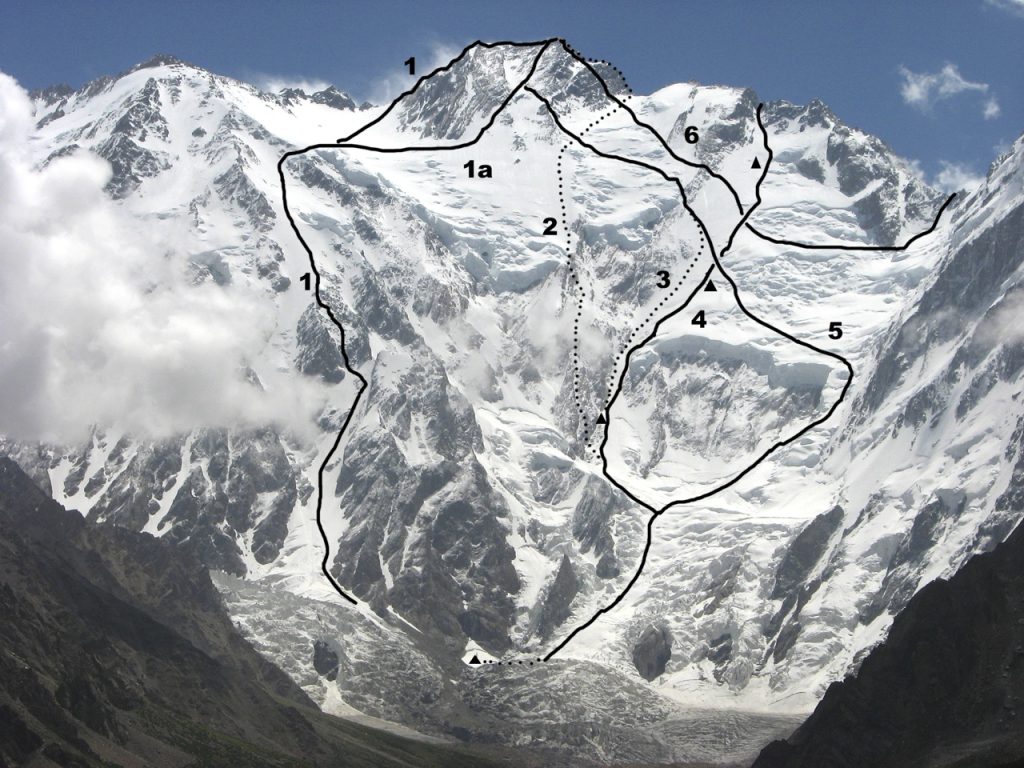
Wildlife and Natural Settings
Nanga Parbat’s slopes nurture a surprising tapestry of life, defying its harsh and seemingly barren exterior. As you ascend this majestic peak, the natural world transforms dramatically.
At the lower reaches, nestled in fertile valleys, a vibrant tapestry of wildflowers unfolds. Delicate irises and hardy edelweiss add splashes of color, while coniferous forests of juniper and pine dominate the mid-slopes. These forests provide a vital habitat for a diverse range of birdlife. Keen observers might be rewarded with sightings of lammergeyers, majestic birds of prey with impressive wingspans, soaring high above.
As the altitude increases, the air thins, and the landscape transitions into a realm of alpine meadows. Here, wildflowers adapted to the harsh climate bloom in vibrant hues, blanketing the slopes with a surprising beauty. Surefooted ibex, mountain goats with impressive horns, navigate the rocky terrain with ease, their agility a testament to their remarkable adaptation.
Higher still, the permanent snow line marks the domain of snow leopards, these elusive predators perfectly camouflaged against the snowy backdrop. Nanga Parbat’s diverse ecosystem showcases the remarkable resilience of life and the delicate balance of nature within this awe-inspiring mountain range.
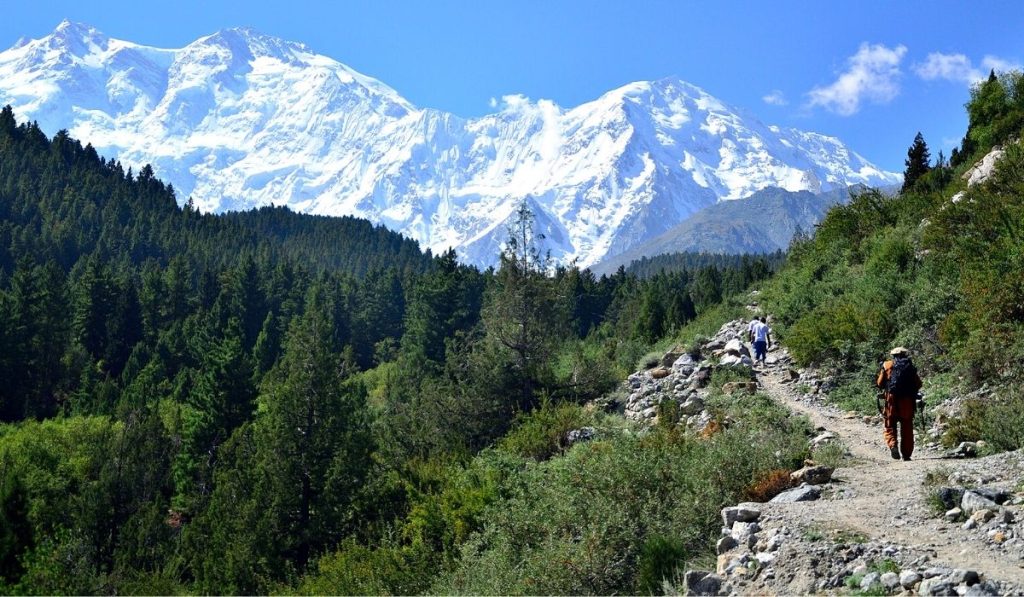
Endemic Species around Nanga Parbat
Nanga Parbat’s diverse ecosystem harbors a treasure trove of wildlife, with a particular focus on species endemic to the region. These fascinating creatures have adapted to thrive in the mountain’s unique environment, adding another layer of wonder to its majestic beauty.
One such gem is the Western Himalayan Brown Bear, a solitary omnivore found in the alpine meadows and forests below the snow line. These majestic animals, with their thick fur and imposing stature, play a crucial role in maintaining the delicate balance of the mountain ecosystem.
Soaring through the thin air above are the Western Himalayan Snowcocks and Himalayan Griffons. These high-altitude birds have evolved adaptations like specialized hemoglobin to cope with the oxygen-depleted environment. Spotting these magnificent creatures against the backdrop of Nanga Parbat’s peak is an unforgettable experience.
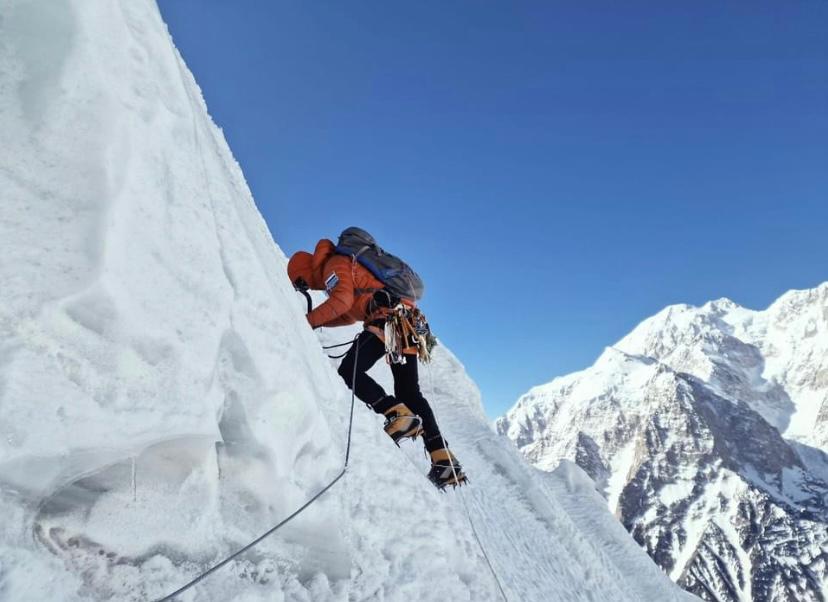
In the crystal-clear glacial streams, the Kashmir Trout, a vibrantly colored fish, thrives in the cold, fast-moving water. These fish are not only an important part of the aquatic ecosystem but also a symbol of the pristine mountain environment.
While these are just a few examples, Nanga Parbat’s slopes are home to a variety of endemic insects, amphibians, and reptiles, each playing a vital role in the mountain’s delicate web of life. Protecting these unique creatures is essential for preserving the ecological integrity of this awe-inspiring region.
Conservation Efforts in the Region
Nanga Parbat’s breathtaking beauty and unique ecosystem face growing threats. Recognizing this urgency, several conservation efforts are underway to protect this majestic mountain and its inhabitants.
One crucial initiative is the establishment of protected areas. The creation of national parks and wildlife sanctuaries around Nanga Parbat helps regulate human activity and safeguard sensitive habitats. These protected areas provide safe havens for endangered species like the Western Himalayan Brown Bear and the Kashmir Trout.
Community engagement is another key element. Local communities residing near Nanga Parbat are vital partners in conservation efforts. Programs that educate these communities about the importance of preserving the mountain’s biodiversity and encourage sustainable practices can significantly reduce human impact.
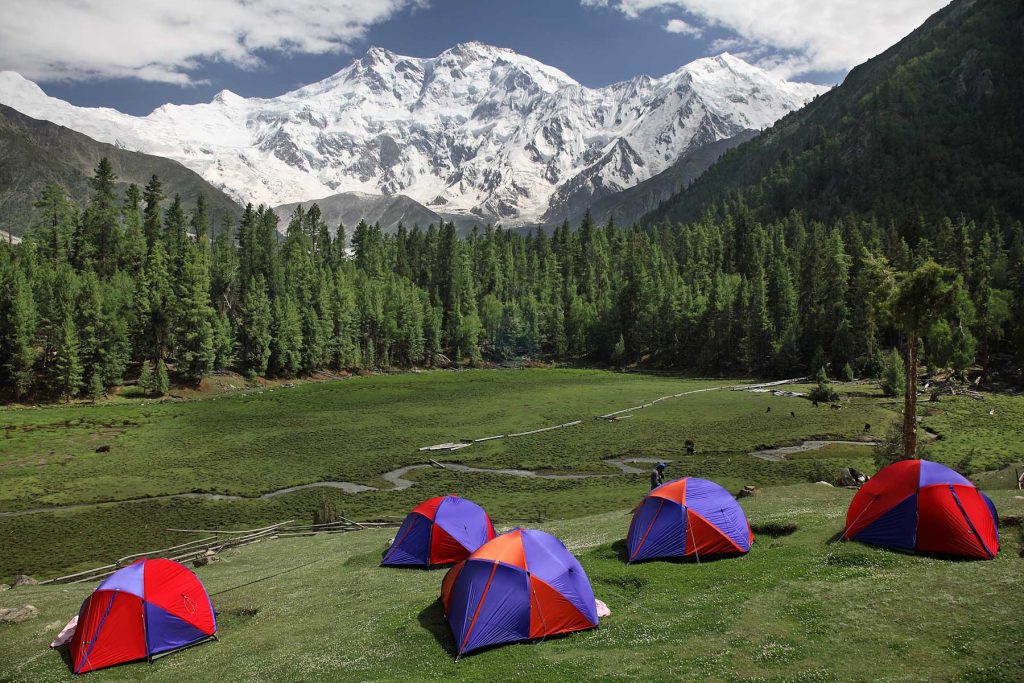
Additionally, research and monitoring programs play a critical role. By studying the flora and fauna of the region, researchers gain valuable insights into the health of the ecosystem. This information helps in formulating targeted conservation strategies to address specific threats faced by Nanga Parbat’s unique wildlife and natural habitats.
Through a collaborative effort between government agencies, local communities, and conservation organizations, Nanga Parbat’s breathtaking landscapes and its remarkable biodiversity can be safeguarded for generations to come.
Tips for Safe and Successful Climbing/Preparing for the Climb
Nanga Parbat is no ordinary climb. To attempt its summit requires meticulous planning and exceptional physical conditioning. Here are some key tips:
- Experience Matters: Only highly experienced climbers with a proven track record on 8,000-meter peaks should consider Nanga Parbat.
- Acclimatization is Key: Gradual ascent and proper acclimatization are crucial to avoid altitude sickness. Plan for extended time at lower camps to adjust to the thin air.
- Technical Expertise: Mastering technical climbing skills like ice climbing and crevasse rescue is essential for navigating Nanga Parbat’s task terrain.
- Top-Notch Gear: Invest in high-quality, cold-weather mountaineering equipment specifically designed for harsh conditions.
- Teamwork Makes the Dream Work: Assemble a strong and experienced team with compatible climbing styles and a shared understanding of the risks involved.
- Respect the Mountain: Nanga Parbat is a formidable force. Be prepared to turn back if weather conditions deteriorate or if you feel even slightly unfit.
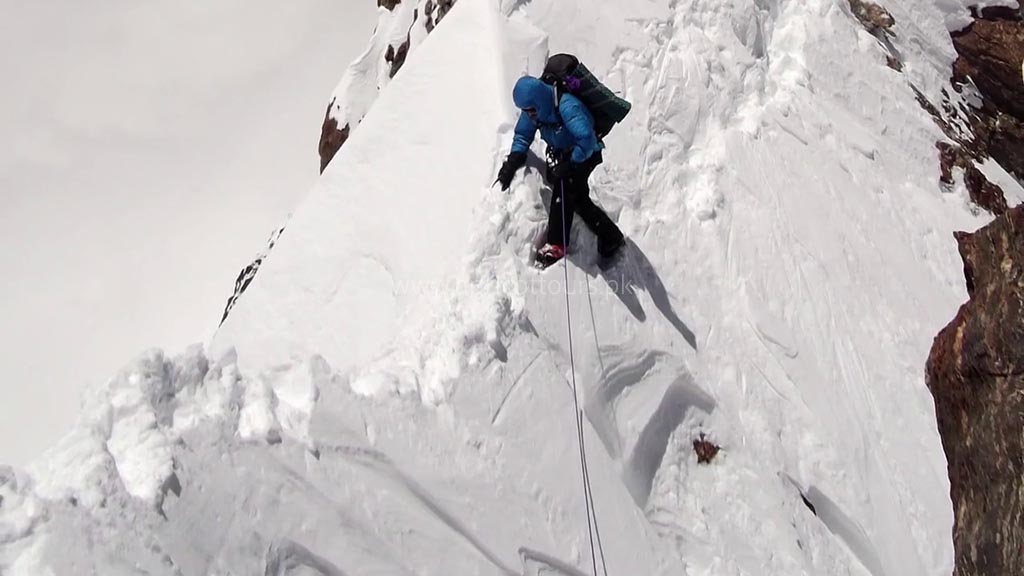
Essential Gear and Supplies
Nanga Parbat’s unforgiving environment demands a meticulously chosen gear list. Here’s a glimpse into the essentials:
- Extreme Cold Weather Clothing: Down suits, insulated boots, and multiple layers of thermal clothing are crucial to combat the biting cold.
- Climbing Hardware: Ice axes, crampons, carabiners, ropes, and a harness form the foundation for safe navigation on Nanga Parbat’s technical terrain.
- Safety Equipment: Avalanche transceivers, probes, and shovels are essential for mitigating avalanche risk. A personal locator beacon (PLB) can be a lifesaver in emergencies.
- Shelter: A sturdy mountaineering tent capable of withstanding high winds and snowfall is vital for establishing base and high camps.
- Cooking Gear: A lightweight stove with fuel canisters ensures you can prepare hot meals, a morale booster at high altitude.
- First-Aid Kit: Be prepared for potential injuries with a comprehensive first-aid kit for treating altitude sickness and minor injuries.
- High-Altitude Supplies: Specialized items like a down sleeping bag, a reliable headlamp, and a sturdy thermos are crucial for survival at high altitude.
Nanga Parbat base camp
Nestled amidst the awe-inspiring embrace of Nanga Parbat lies Base Camp, a temporary settlement serving as the launching point for expeditions attempting the summit. While dwarfed by the mountain’s colossal presence, Base Camp offers a unique opportunity to experience the raw beauty and power of Nanga Parbat firsthand.
Accessible through trekking routes, Base Camp typically sits at an altitude of around 4,000 meters (13,123 feet), offering dramatic views of the surrounding Himalayan landscape. Simple tents pitched on the rugged terrain provide basic shelter for climbers as they acclimatize to the thin air and prepare for the arduous journey ahead.
Life at Base Camp is a stark contrast to the hustle and bustle of everyday life. The silence is broken only by the howling wind and the occasional rumble of avalanches echoing down the mountain slopes. The harsh environment demands a simple existence focused on staying warm, hydrated, and meticulously planning the ascent.
Physical and Mental Preparation Tips
Nanga Parbat isn’t just a physical challenge; it’s a mental test. Here’s how to prepare for both:
- Peak Physical Fitness: Years of dedicated training focused on building endurance, strength, and cardiovascular health are crucial. Simulate high-altitude conditions with hypoxia training masks and acclimatization hikes for climbing the mountain.
- Mental Toughness: Develop mental fortitude to handle extreme cold, exhaustion, and the ever-present threat of danger. Visualization exercises can help you rehearse the climb and build confidence.
- Teamwork and Communication: Nurture strong communication and teamwork skills within your climbing team. The ability to rely on and support each other is vital for success.
- Risk Management: Develop a sound understanding of the mountain’s dangers. Learn to assess weather conditions, avalanche risks, and your own physical limitations. Be prepared to turn back if necessary.
- Positive Attitude: Maintain a positive and focused mindset throughout the climb. Resilience and a strong will to overcome tasks are key to pushing through difficult moments.
The Impact of Climate on Nanga Parbat Climbing/Nanga Parbat weather
Rising temperatures affect Nanga Parbat. Melting glaciers increase avalanche risk, unpredictable weather disrupts climbs, and shorter climbing seasons pose new tasks for expeditions attempting to summit this formidable peak.
Climate Change and Its Effects on the Terrain
Climate change tightens its grip on Nanga Parbat. Melting glaciers reshape the landscape, increasing rockfall risks and altering access routes. The mountain’s once-stable terrain becomes more unpredictable, posing new tasks ( in Karakoram Highway).
Is Nanga Parbat located in India or Pakistan?

Nanga Parbat, locally known as Diamer, stands at 8,126 meters above sea level, making it the ninth-highest mountain in the world. Situated in the Diamer District of Pakistan’s Gilgit-Baltistan region, Nanga Parbat serves as the western anchor of the Himalayas.
Why is Nanga Parbat called the Killer mountain?
Nanga Parbat is infamous for its extreme difficulty and has earned the nickname “Killer Mountain” due to its high number of climber fatalities, challenging even the most seasoned mountaineers to their limits.
Is K2 called Nanga Parbat?
Nanga Parbat, meaning “Naked Mountain,” is the world’s ninth-highest peak, located in Pakistan’s Gilgit-Baltistan region. It stands as Pakistan’s second tallest mountain, following K2. Also referred to as Diamir, which translates to “king of mountains,” Nanga Parbat commands awe and respect.
How many times has Nanga Parbat been climbed?
Most modern attempts to climb Nanga Parbat are made via the western Diamir face, considered the easiest and safest route, with the Kinshofer Route being the standard path. As of 2005, Nanga Parbat had been ascended 263 times by 261 climbers (including multiple ascents by Messner and SP Member Qudrat Ali), but these achievements have come at the cost of 62 lives.
